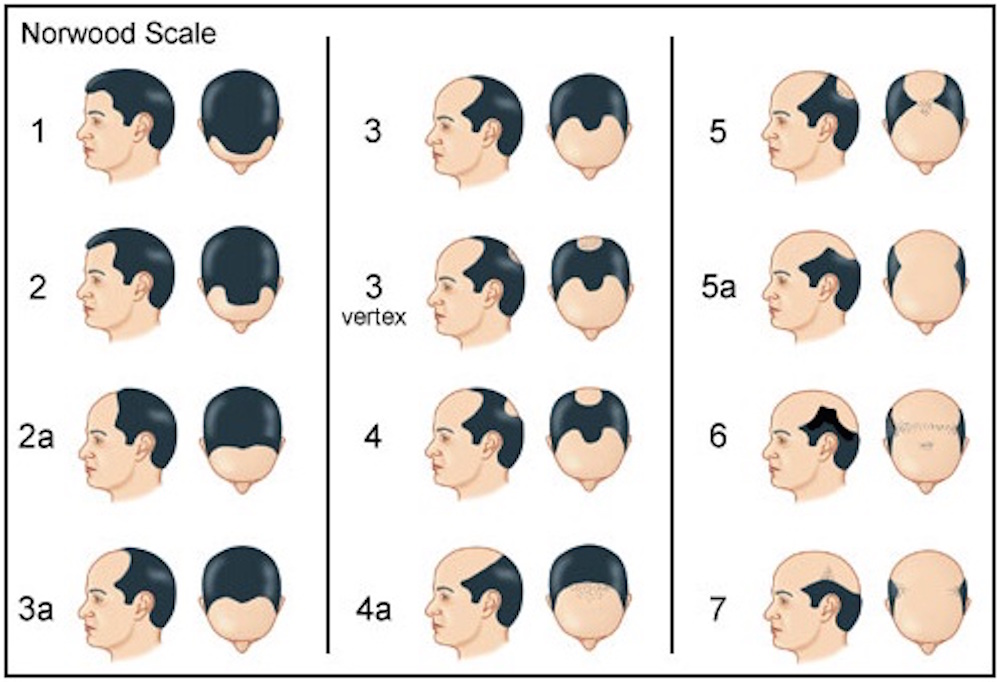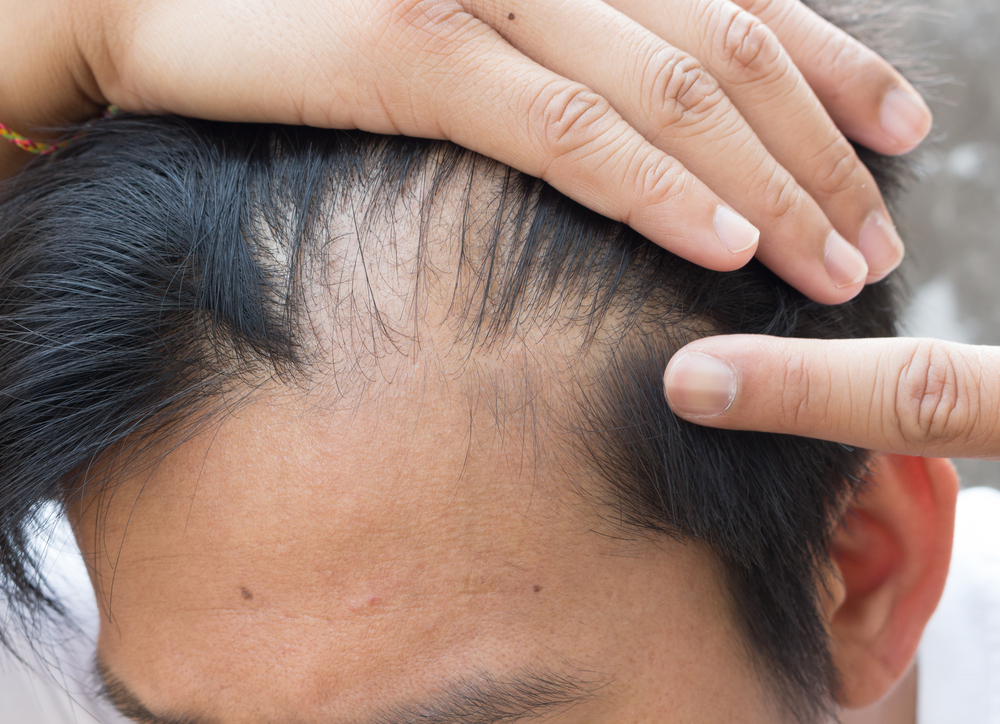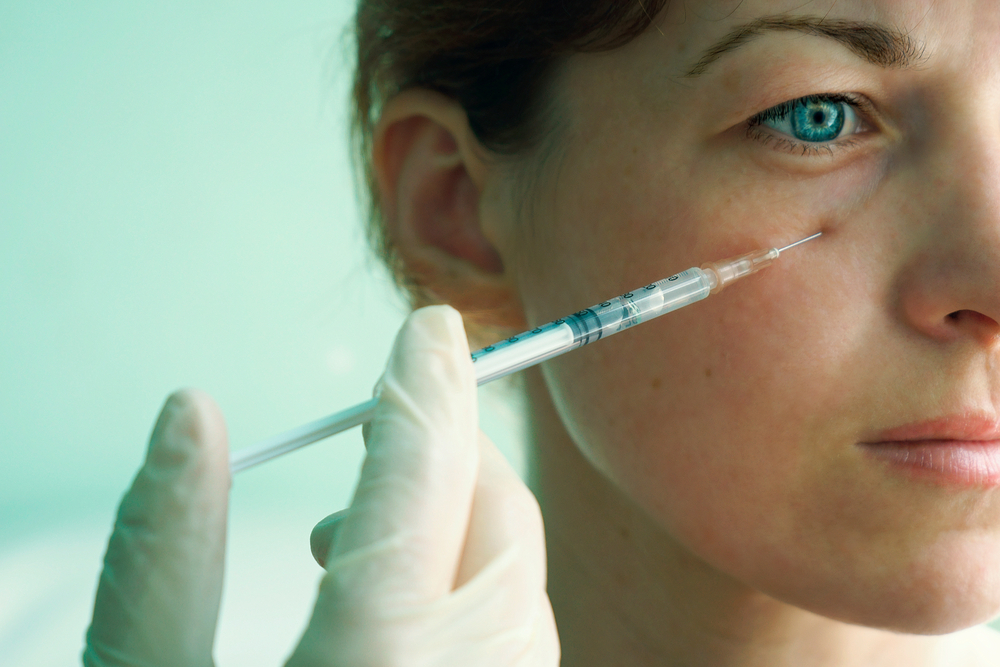An overwhelming 95% of all hair loss cases begin with hair miniaturization. This process, which causes individual strands and follicles to shrink, can eventually lead to baldness. Diagnosing these symptoms and understanding the hair’s growth cycle can help prevent hair loss before it’s too late.
Hair miniaturization, also known as androgenic alopecia or pattern hair thinning, mainly affects men in their late 20s and older. Before falling out, the hair loses density and appears more sparse. Eventually, the hair growth cycle may stop altogether, causing male pattern baldness.
So how does one maintain or recover their crowning glory when miniaturization strikes? Understanding the hair growth cycle is key to diagnosing and preventing this common condition.
The hair growth cycle and hair miniaturization
Hair can be categorized into two types — vellus and terminal. Soft, fine and downy vellus hairs eventually become terminal hairs, which are defined by a darker, thicker appearance. As terminal hair grows, it moves through three distinct phases: anagen (growth phase), catagen (transition phase) and telogen (rest phase).
Anagen phase — This phase can last from 3-5 years, and represents the main hair growth phase.
Catagen phase — The briefest phase in the cycle, lasting only 1-2 weeks. It is the phase between growth and rest.
Telogen phase — This phase lasts 3-4 months. Hair shedding increases during this period, with old hairs falling out to make way for new hairs to replace them. This leads into a new cycle of anagen, or hair growth.
If the hair growth cycle is interrupted, hair miniaturization can occur. The first and most common interruption takes place within the anagen phase of growth.
The second interruption can occur during the telogen phase, and is known as telogen effluvium. An increased time is spent in the telogen phase of the growth cycle, and may be caused by a recent injury or illness, adverse effects to anesthesia, a hormonal imbalance as a result of pregnancy, menopause, or a thyroid condition.
These interruptions can cause shorter and thinner hair strands to grow, constrict the follicles, and eventually, thin out the hair or induce baldness.
Causes of hair miniaturization
The onset of hair miniaturization can be distinguished by four root causes: genetic predisposition, the presence of dihydrotestosterone (DHT), age, and nutritional deficiency.
1. Genetic predisposition
Genes inherited from your maternal or paternal side can be responsible for a predisposition to hair miniaturization. If either of your parents have manifested any of the symptoms indicative of miniaturization or baldness, then there is a possibility that you may carry the genes as well.
2. DHT
DHT is the primary hormone linked to hair loss. Testosterone is transformed into DHT via a hormonal pathway called 5-alpha-reductase. Hairs on your head can thin if exposed to excess levels of DHT. DHT attaches to the hair follicle, forcing it to shrink and the hair to eventually shed.
Male pattern baldness is provoked by sensitivity to high levels of this hormone. In cases of male pattern baldness, the anagen phase of hair growth shortens. DHT causes irritation and inflammation of the hair follicle, ultimately contributing directly to hair miniaturization. If high levels of DHT are allowed to persist, terminal hair begins to transition to vellus hair. Eventually, the vellus hair disappears and chronic baldness occurs.
However, certain areas of the scalp are immune to the effects of DHT, an area known as the “permanent zone”, or the back and sides of the scalp. These areas are rarely, if ever, affected by miniaturization. The front and top of the scalp are the areas most prone to thinning.

3. Age
Age is an influential factor in the miniaturization of the hair. This is due to the fact that age is accompanied by a slowing of certain natural bodily processes, among them the hair growth cycle.
The deceleration of these processes can also be caused by an increase in age-related free radicals. Free radicals move throughout the body, seeking molecules to take electrons from. As electrons are absorbed by free radicals, the molecules are weakened. This results in typical signs of aging such as wrinkles, graying hair and/or loss.
4. Nutritional deficiency
Nutritional deficiency can weaken the hair and interfere with its growth cycle. Inadequate delivery of nutrients to the hair follicle can also detrimentally affect the health of your hair.
Inversely, research shows that the hormone DHT can be inhibited internally through a carefully selected diet. Effective internal DHT inhibitors include green tea, flax seeds, sesame seeds and pumpkin seed oil.
You can further safeguard the health of your hair by eating plant-based foods that are rich in alkaline, such as raw leafy green vegetables, or foods high in fiber, like split peas, lentils and black beans. Probiotic foods such as sauerkraut, tempeh, yogurt and kefir are also full of hair health-giving properties.
Types of hair miniaturization
Miniaturization can manifest in different intensities. Awareness of the symptoms of each phase can help you determine the most appropriate course of treatment.
Phase one: Minimal miniaturization — The scalp in the permanent zone is not affected by miniaturization. However, there are examples of thinning and scattered, fine vellus hairs in other parts of the scalp, such as above and behind the ears.
Phase two: Moderate miniaturization — Most of the hair has been miniaturized and appears thin and wispy. The majority of the hair is still present. The hairs, however, are so fine in diameter that they give the visual appearance of thinning.
Phase three: Extensive miniaturization — In this final phase, although there is very little loss of actual hair, the diameter of the hair shaft is dramatically reduced. As a result, there is an appearance of almost complete balding. Miniaturization is evident throughout the scalp.
Each of these examples serves to illustrate that the progressive reduction in size of the hair shaft gives the appearance of balding, rather than the loss of hair. Catching your hair as it “miniaturizes”, before it’s lost completely, is key as it provides you with a greater range of options to treat the condition before it advances.
Options for reversing miniaturization
Regardless of the cause of hair miniaturization, the question most sufferers want answered is whether or not the results can be reversed. There are several factors that affect one’s ability to re-stimulate hair growth.
The first is the extent of the hair thinning as outlined in the three phases outlined above. The second factor is the presence of the Arrector Pili Muscle (APM), which connects the hair follicle with the stem cell. In one study it was found that individuals who still had the APM connection had a greater chance of reversing miniaturization, as stem cells could be delivered to the follicle.
The significance of these findings is that miniaturization is a process. When you catch it early enough the connection to the APM is most likely still present and the effects reversible.
Some clinics also recommend hair miniaturization mapping prior to treatment. This process involves examining the hair using high magnification to digitally plot the areas on the scalp that are thinning and not thinning for comparison.
The mapping enables your doctor or practitioner to see how far the disorder has progressed and predict the areas that will be affected in future. It can be an invaluable tool to help guide your choices about treatment.
Hair loss medications
FDA-approved hair loss medications such as Propecia (Finasteride) and Rogaine (Minoxidil) are particularly effective in reversing miniaturization in its early stages and increasing hair density. Rogaine can be used by both men and women and is an over the counter topical treatment. It stimulates new hair growth by increasing blood flow to shrinking hair follicles.
Propecia is a treatment that specifically targets high DHT levels in the body. It reduces active levels of DHT in the body to prevent miniaturization, and is most commonly used by men with male pattern baldness.
Hair transplant surgery
If the scalp is already presenting signs of extensive miniaturization or the onset of baldness, medication will not be able to restore the hair. Surgery in the form of a hair transplant represents a more suitable option.
Hairs are carefully harvested from the permanent zones (back and sides of the head) that are not sensitive to miniaturization. These hairs are then transplanted into thin and balding areas of the scalp.
If you are concerned about the health of your hair and believe you may be suffering from miniaturization, one of the best choices you can make is to schedule an appointment with an expert as soon as possible to discuss your treatment options.









